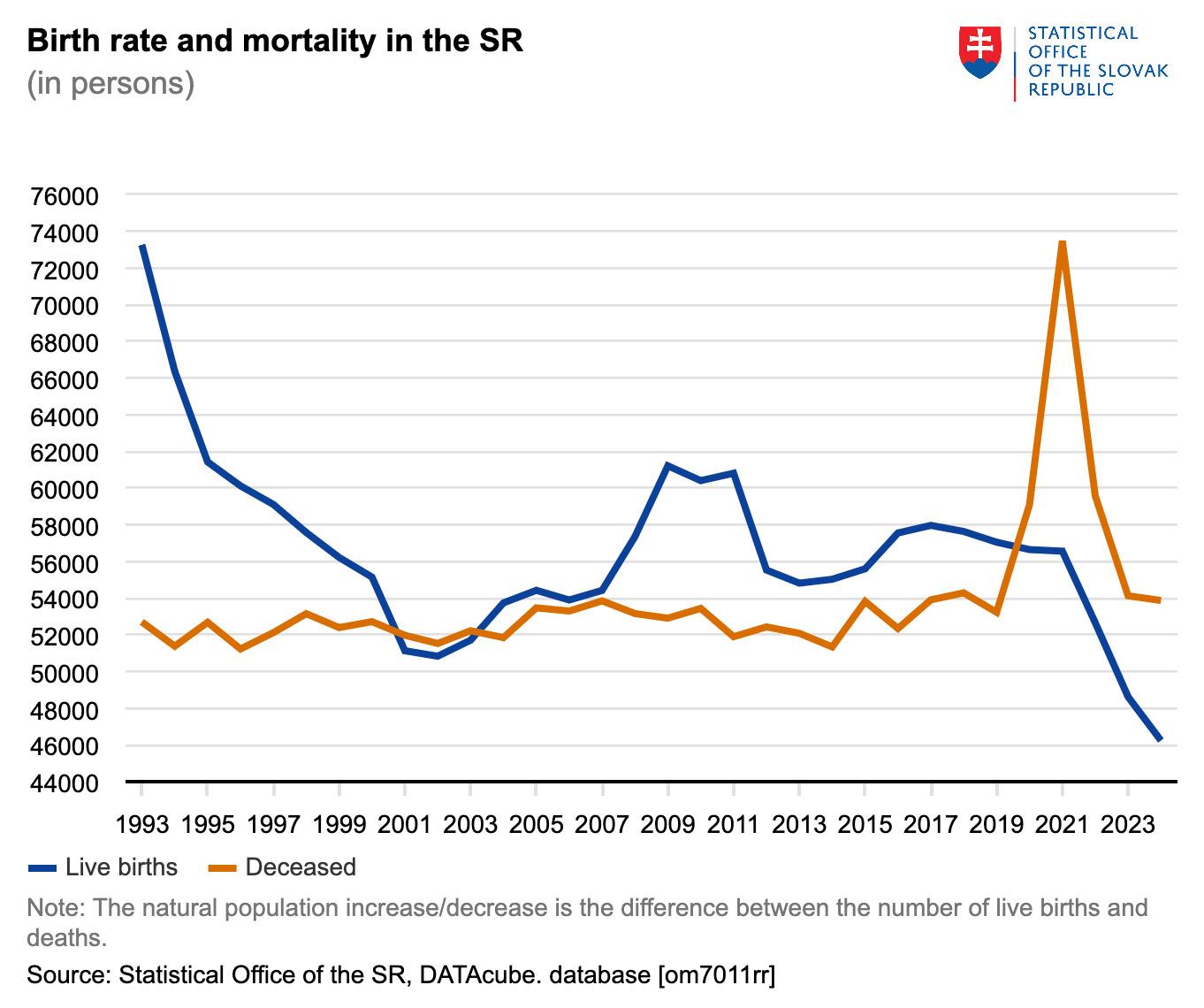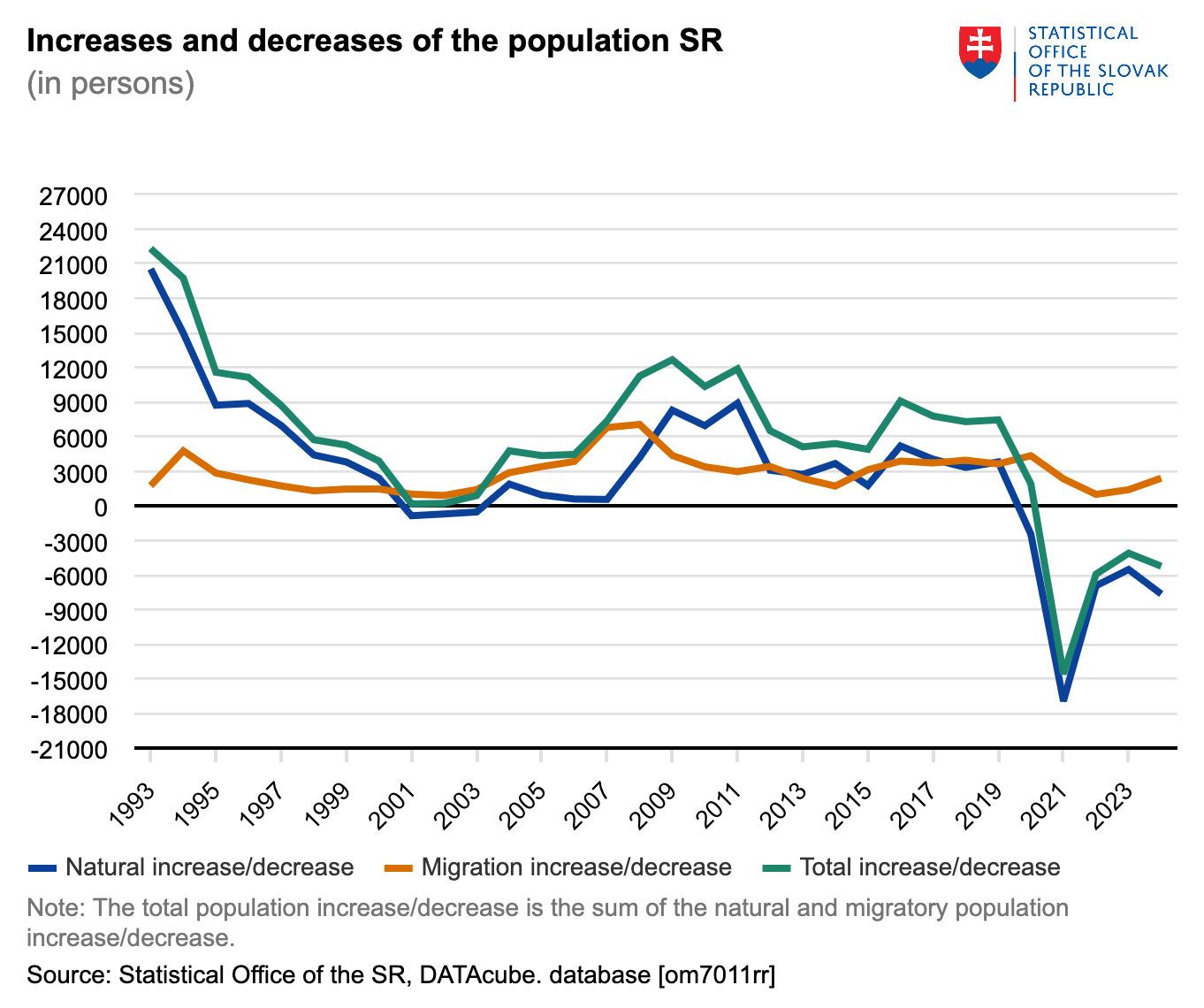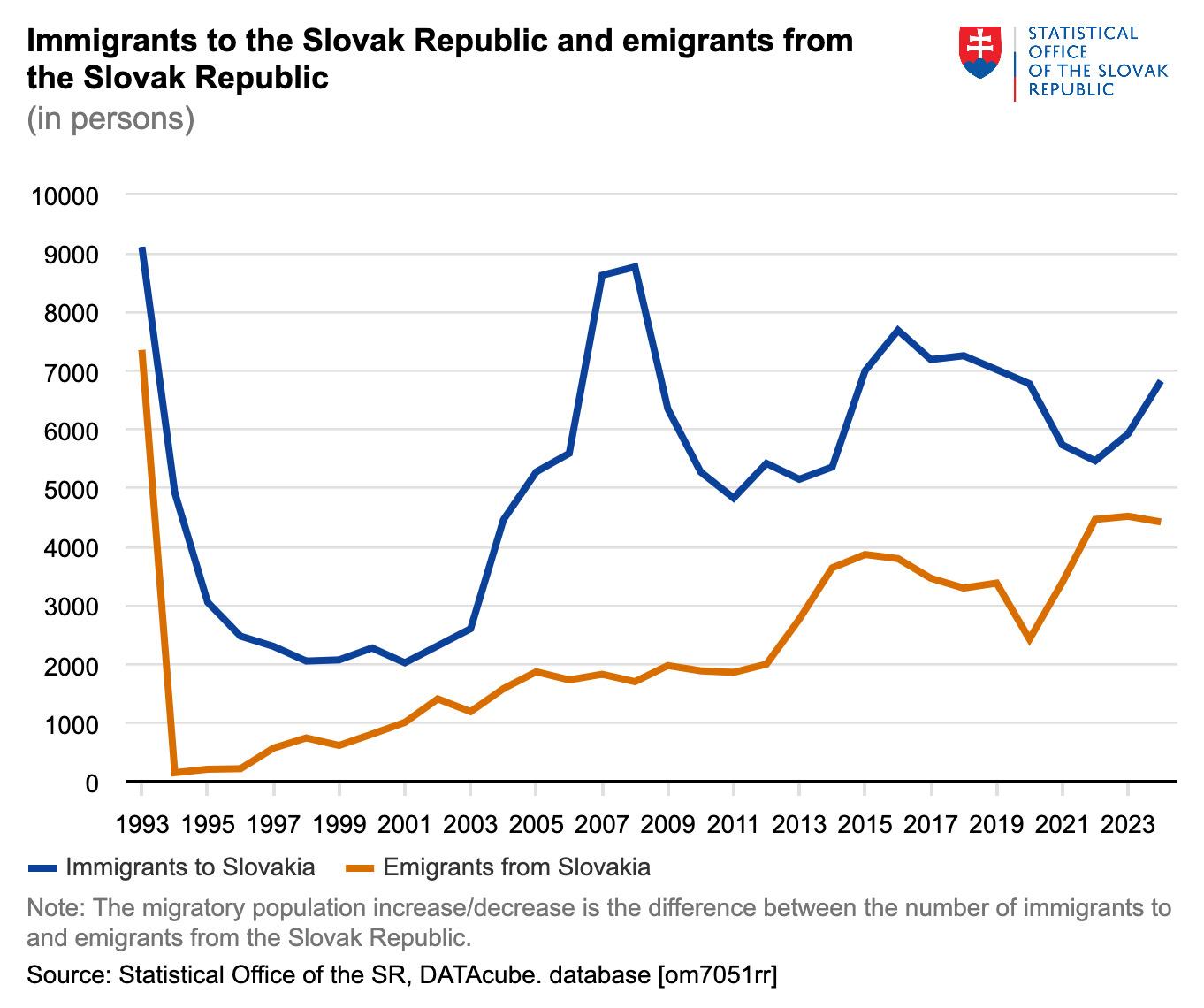Slovakia’s population declines for fourth consecutive year amid record low birth rate
Slovakia’s population fell for the fourth year in a row in 2024, as a continued decline in the birth rate outpaced the positive effects of foreign migration, according to the latest data released by the Statistical Office of the Slovak Republic.
As of the end of 2024, the total population stood at 5,419,451, marking a year-on-year decrease of more than 5,200 people. This ongoing population decline represents the first prolonged period of demographic shrinkage since the country became independent in 1993. The key driver behind this trend remains the natural population decrease, primarily due to a historically low number of live births.
In 2024, nearly 54,000 people died in Slovakia, while only slightly more than 46,000 children were born. This resulted in a natural population decrease of approximately 7,600 people—the second highest annual drop in the country’s modern history, surpassed only in 2021 during the peak of COVID-19-related mortality. Over the past five years, Slovakia has lost nearly 40,000 residents due to natural population changes.
“After a period of high mortality during the pandemic years 2020–2022, the birth rate has been falling sharply in the last three years,” said Zuzana Podmanická, Director of the Population Statistics Department at the Statistical Office.
While Slovakia has observed a declining trend in births for the past seven years, the most dramatic drops have occurred recently. Since 2022, the number of live births has fallen below 50,000 annually—levels not seen in the country’s post-war history.
The crude birth rate—a metric comparing births per 100,000 inhabitants—has also reached new lows. After remaining above 1,000 live births per 100,000 people for two decades, it dropped below that threshold in 2022 and declined further to just 853 in 2024. “This is the lowest crude birth rate not only since Slovakia’s independence, but in the past 100 years,” Podmanická noted.
Despite the natural decrease, migration continues to have a modestly positive impact. In 2024, more than 6,800 people moved to Slovakia for permanent residence, exceeding the number of those who emigrated by about 2,400. This represents a higher net migration figure than in the previous two years.
Nevertheless, foreign migration has not been sufficient to offset the losses from the natural decrease. Since 1993, Slovakia has consistently experienced a positive migration balance, ranging from 900 to 7,100 people annually. But for the last four years, that surplus has not been enough to counterbalance the declining birth rate and overall population loss.
The data highlights an ongoing demographic challenge for Slovakia, as it grapples with aging populations, declining fertility, and the need for long-term strategies to stabilize or reverse the trend.











